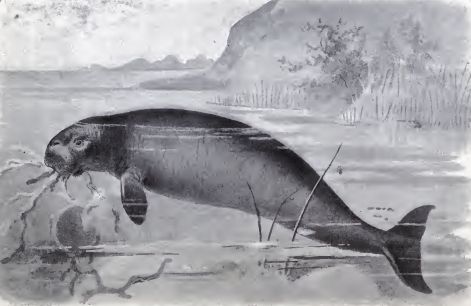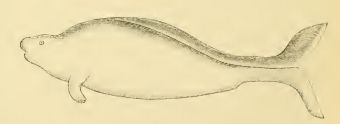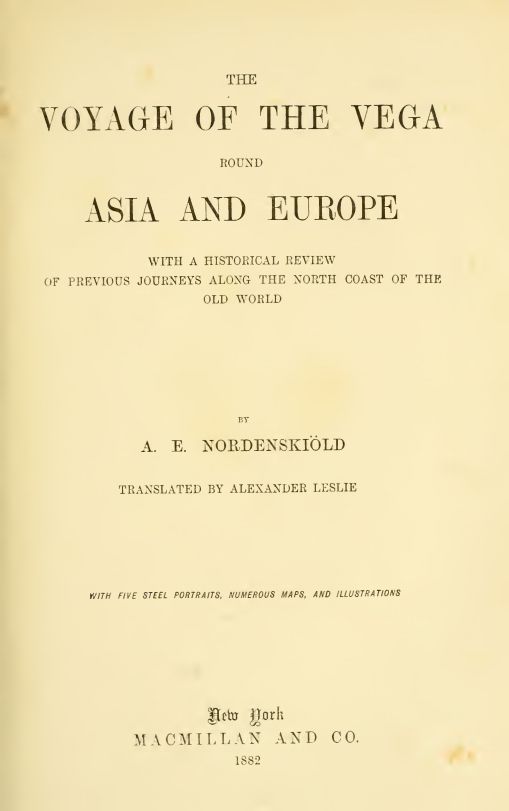Thirty miles off the eastern coast of the Kamchatka
Peninsula lie the Commander Islands, the largest of which, at about sixty miles
long and nine miles wide, is Bering Island. It is named after the Russian
explorer Vitus Bering, who led two expeditions off Kamchatka that mapped vast,
previously unexplored, areas of the northern Pacific Ocean. The naturalist on
the second expedition was Georg Wilhelm Steller, a German zoologist, botanist
and physician, who joined Bering at Okhotsk in March 1740.
Two ships, the St
Peter and St Paul departed for Kamchatka in September of the same
year, and travelled eastwards until they sighted Alaska in 1741, and landed on
or near Kayak Island, making them the first Europeans to land on the North-west
coast of America. Bad weather had separated the ships and even worse conditions
drove Bering and Steller, on board the St Peter, back towards the
Russian mainland.
The conditions on the voyage home were truly horrific and the
St Peter limped along the Aleutians until it made landfall on the larger of the
Commander Islands, which was mistakenly thought to be mainland Kamchatka.
Stranded there, twenty-eight men died of scurvy (Bering also died and for many
years it was believed that he, too, had succumbed to scurvy but modern research
has shown that it is almost certain that he died from heart failure), Steller
tried to get the crew to eat leaves and berries to stave off the scurvy but his
attempts were rejected by the officers and only Steller and his assistant were
even slightly free from the effects of scurvy. In spite of the horrendous
conditions, Steller continued to record his observations of the wildlife he saw and many species were subsequently named for him, including a jay, an
eider duck, a sea-lion, an otter and a sea-eagle.
 |
| Steller's Sea-Cow |
However, Steller’s name is
indelibly associated with another creature – Steller’s Sea-Cow. With the
exception of the Arctic Fox, the higher fauna of the Commander Islands are
aquatic mammals and the most substantial of these was the Sea-Cow, a species
related to the manatee and the dugong, but far, far larger than these southern
cousins and, until Steller made his observations, an unknown animal. Steller’s
Sea-Cow grew up to thirty feet in length and ten tons in weight and lived in
herds in the marine shallows, where it browsed incessantly on seaweed, raising
its head above the surface every four or five minutes to breathe.
 |
| Steller's drawing of the Sea-Cow |
They were
slow-moving beasts, very docile and inoffensive, with inch-thick, almost
armour-like, dark grey-brown skin (‘almost impervious to an ax or to the
point of a hook’, as Steller wrote), with front flippers not unlike a
seal’s that ended with something like a claw or blunt horse's hoof, the
underside of which were covered with coarse, brush-like bristles, about half an
inch in length. These arm-like limbs were used to swim in water, to propel the
animal along the bottom of the sea, to climb and pull itself over rocks, to dig
and uproot seaweed, and to embrace their partners during mating.
 |
| Steller's Sea-Cow - drawing |
Steller’s
description of the exterior and interior of the Sea-Cow is exceptionally
detailed and includes an account of how easy it is to hunt the beasts, which
are usually so intent on feeding that a boat or swimmer can easily approach
them. They were harpooned or speared with barbed hooks and it could take thirty
or forty men to pull the body ashore but Steller records that if an animal was
hooked, the rest of the herd would come to its assistance and try to overturn
the boat or break the ropes with the bulk of their bodies. The flesh tasted like
good beef and was, according to Steller ‘excellent’, that of the calves
like veal or lard, and if salted it was not unlike corned beef. Steller says
that there are such great numbers of these animals around the Commander Islands ‘… they
would suffice to support all the inhabitants of Kamchatka’.
 |
| Steller's Sea-Cow skeleton |
And that was
the problem. After the remnants of the St Peter were fashioned into a
make-shift ship and the remainder of its crew eventually made their way back to
the mainland, the reports were published and other ships followed the
descriptions therein and went in search of furs of the Arctic foxes, fur seals,
sea-otters and sea-lions. The crews of these vessels took full advantage of the
plentiful supplies of the delicious Sea-Cows, stocking their holds with meat for
their voyages. It was also found that the sub-cutaneous fat could be rendered
into a fine oil that burned without smoke or offensive smell, and did not go
off in warmer weather; the hides of the animals were used to cover boats.
Contrary to Steller’s description, the population of the Sea-Cows was already
quite low, to the point of endangerment, as other environmental effects were
causing a rapid decline in numbers but the impact of the new hunters was
catastrophic. Within thirteen years of their discovery, the Steller’s Sea-Cow
had been hunted to extinction.
 |
| A E Norderskiold - Voyage of the Vega |
Adolf Nordenskiöld, in his Voyage of the Vega,
wrote that the Sea-Cow had been seen in the waters of the nearby island of Attu
as late as 1780, but this is disputed as he was basing his information on reports
from Aleutian natives, who used terms that they also used to describe certain
species of toothed whales.
 |
| I discovered this animal and all I got was this lousy stamp. |
Steller is barely remember these days, other than
through the creatures that carry his name, whereas Mr Bering managed,
posthumously, to have an island, a sea, a strait, a land-bridge and a glacier
named after him (and the Commander Islands are named in recognition of his
naval rank). I suspect that there may be a moral in this, somewhere, but I’m
blowed if I can think what it could be.


No comments:
Post a Comment